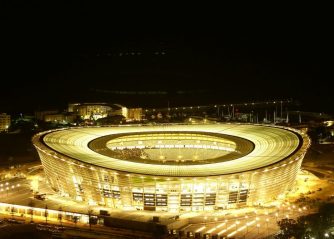Champions League Final: An In-depth Overview and Analysis

Champions League Final: A Definitive Guide to Football’s Pinnacle Event
Introduction:

The Champions League Final is the most prestigious club football event in Europe, showcasing the best teams in the continent. With a rich history and immense popularity, this article provides a comprehensive analysis of what the Champions League Final is, the different types it consists of, its quantitative measurements, how they differ from each other, and a historical examination of their pros and cons.
Understanding the Champions League Final
The Champions League Final is the culmination of the UEFA Champions League, an annual club football competition organized by the Union of European Football Associations (UEFA). It brings together the top teams from different European leagues, including the English Premier League, Spanish La Liga, German Bundesliga, and more, to compete for ultimate glory.
Types of Champions League Finals
There are different types of Champions League Finals throughout history, each with its own characteristics and significance. Some of the most popular types include:
1. Single-legged Finals: In this format, the final is played in a single match at a neutral venue. This format has been widely adopted in recent years, providing a high-stakes, winner-takes-all spectacle.
2. Two-legged Finals: Previously known as the European Cup Final, this format consisted of home and away matches between the two finalists. The aggregated score of both matches determined the winner. This offered a balanced playing field as teams had to perform well in both legs.
3. Pre-Champions League Era: Before the Champions League rebranding, the final was known as the European Cup Final. While sharing similarities with the current format, this era had fewer teams and fewer rounds, making the final an even more exclusive event.
Quantitative Measurements of the Champions League Final
The Champions League Final captures the attention of millions of football fans worldwide. Here are some quantitative measurements that underline the event’s magnitude:
1. Viewership: The final consistently attracts one of the largest global TV audiences among sporting events, with billions of viewers tuning in to witness the drama unfold.
2. Social Media Impact: The event generates significant buzz on social media platforms, with hashtags related to the final trending worldwide. The number of online engagements, such as likes, shares, and comments, further gauges its impact and reach.
3. Financial Implications: The Champions League Final is not only an athletic spectacle but also a financial powerhouse. It generates substantial revenue from ticket sales, sponsorships, merchandise, and broadcasting rights, contributing to the growth and sustainability of participating clubs and UEFA itself.
Distinguishing Factors between Champions League Finals
Each Champions League Final possesses unique aspects that set it apart from others. These factors include:
1. Venue: The selection of the venue greatly influences the atmosphere and ambiance of the final. Iconic stadiums like Wembley, Camp Nou, and San Siro have hosted some of the most memorable finals, adding historical significance to the matches.
2. Teams Involved: The final features some of the best clubs in Europe, each with its own style of play, star players, and passionate fan bases. The combination of these factors creates diverse matchups and storylines.
3. Tactical Approaches: Coaches and teams employ different tactical strategies to secure victory in the final. Some emphasize attacking play, while others focus on defensive solidity. This variation in approaches adds an element of unpredictability and excitement.
Historical Analysis of Pros and Cons
Throughout Champions League Final history, different formats have had their advantages and disadvantages:
1. Single-legged Final Pros: The single-legged format offers high-intensity matches with no room for errors. It provides a thrilling spectacle for viewers and a nail-biting experience for fans, knowing that a single goal can determine the winner.
Cons: The single-legged format can sometimes be influenced by external factors such as weather conditions or refereeing decisions that could impact the outcome of the match.
2. Two-legged Final Pros: The two-legged format ensures a fairer assessment of teams’ capabilities over two matches. It allows for comebacks and dramatic turnarounds, creating memorable storylines.
Cons: The two-legged format can sometimes result in cautious and defensive approaches from teams, prioritizing minimizing risk over entertaining football, which might dampen the excitement of the final.
In conclusion, the Champions League Final stands as the pinnacle of club football in Europe. From understanding its different types and quantitative measurements to analyzing how they differ from each other and exploring the historical pros and cons, this article has provided a comprehensive insight into the grandeur and significance of this illustrious event. As football enthusiasts eagerly await each edition, the Champions League Final continues to captivate and enthrall fans around the globe.
















































